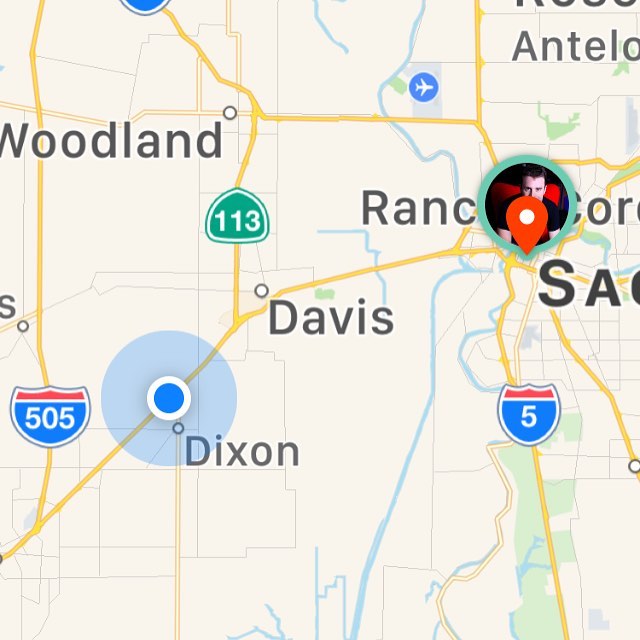The definition of the sharing economy
The rise of the sharing economy is attributed to the transformation of the internet. Website and applications facilitate engagement in the sharing economy, which is predominantly digital (John, 2016). “The notion of sharing of idle capacity is central to the definition of sharing economy.” (Frenken & Schor, 2017, p.3). The growth of sharing systems has been significantly driven by the development of Information and Communication Technology, which makes it possible to connect with like-minded peers and share their belongings (Roh, 2016). In addition, “the sharing economy mode can be divided into three types: product service system, which allows members to share various products owned by either companies or private individuals. The second is redistribution, and the final one is collaborative lifestyles.” (2015, as cited in Roh, 2016, p. 505). This article will focus on the first type of sharing economy-product service system, and there is an example of a tangible asset of Uber.
Introduction
Uber is an application of a ridesharing platform that enables users to request a car through their smartphone; it emerged during a contemporary consumer culture that emphasizes the value of accessing goods over owning personal ownership and prioritizes social interaction and human experiences (Posen, 2015). According to Uber Announces Results for First Quarter 2023, “Gross Booking grew 19% year-over-year and 22% year-over-year on a constant currency basis. Mobility and Delivery Adjusted EBITDA margins at all-time quarterly highs—operating cash flow of $606 million; Record free cash flow of $549 million” (Uber Investor, 2023)

Innovation of Uber
The progress of information technologies, coupled with the expansion of Web 2.0, has made it possible to establish online platforms that encourage user-generated content, sharing, and collaboration (2010, as cited in Roh, 2016, p.504). Uber, an example of innovation of the Internet, is rooted in the Internet and offers a digital platform that allows underutilized resources to be shared with others, creating economic benefits simultaneously. The most significant innovation is hybrid carpooling; the Uber platform can provide a choice of carpooling for customers. In many cases, sharing a ride with others is a more economical choice than hiring an entire car for oneself. Unlike conventional taxis, Uber employs extensive data analysis to identify users with similar travel routes and provides carpooling choices. This results in cost savings for passengers and enables drivers to earn from multiple fares during a single trip, thereby increasing their income. Posen (2015) said, “A hybrid of car sharing and ridesharing has developed in the sharing economy. This hybrid is ‘for-profit ridesharing’” (p. 414). Moreover, unlike traditional taxi services, these drivers and their vehicles do not require commercial licensing. Most drivers are ordinary individuals who converse with passengers and provide a more enjoyable riding experience, distinct from the typical taxi driver. Absolutely, it is a more convenient process compared to traditional taxis of calling or hailing a cab. Recently, for-profit ridesharing companies have experienced substantial growth due to the convenience that appeals to consumers to use Uber to meet their car demand (Posen, 2015).
“Uber has come to symbolize the rise of platform capitalism. Uber spearheaded a new way of organizing work: the gig economy” (2018, as cited in Seidl, 2020, p. 358). Furthermore, it “epitomizes a new form of the firm itself”: the platform company (2019, as cited in Seidl, 2020, p. 358). Uber’s business model epitomizes this shift towards the gig economy, where drivers work as independent contractors, taking on gigs on the Uber platform. Additionally, Uber does not own a fleet of taxis; it simply provides the technology platform that connects riders with drivers. This business model has become increasingly important in the modern economy, and Uber is often cited as a prime example of a platform company.
Deficiencies
Nevertheless, it cannot be denied that Uber possesses some deficiencies. As Uber grows, it faces challenges from several different groups. One of the shortcomings associated with Uber is the classification of its drivers as independent contractors rather than employees. Independent contractors are individuals or entities organizations hire to work, but they are not considered company employees. Uber drivers do not have employment benefits and lack insurance, compensation, paid parental leave, etc. Furthermore, “Uber does not provide its drivers with their total gratuity” (2014, as cited in Posen, 2015, p. 418). Uber passengers have also taken legal action against Uber, alleging violations of the Americans with Disabilities Act and pursuing claims of assault and battery under the doctrine of respondeat superior (Posen, 2015). More importantly, these parties have challenged Uber under the Lanham Act, alleging that Uber engages in deceptive or inaccurate advertising practices for its services (Posen, 2015). For example, The Consumer Watchdog organization emphasizes that a $21 million fine imposed on Uber is a stark warning against violating consumer protection laws in 2022 because Uber incurred a fine related to its “Uber Taxi” fare estimates and trip cancellation fees. The company acknowledged that its actions had misled or deceived consumers, constituting a violation of consumer law (ABC News, 2022). In addition, there is a real-world case in Australian Brisbane where Uber mistakenly charged a between-bridge toll despite waiving the fee. As per the Australian Government, the $3.55 toll for traveling on the bridge between Milton and South Brisbane had been waived from the previous Friday until Monday morning to “mitigate disruption” caused by the closure of the nearby William Jolly Bridge for maintenance. Despite this, Uber still charged customers the toll, and initially, the company refused to refund the fee when confronted by a customer. Moreover, there is an interesting finding from Instagram.
However, “a challenge is inherent in the regulatory process: That innovation and regulation simply do not work together” (2013, as cited in Posen, 2015, p. 424). Innovation often involves new, ground-breaking ideas and technologies that may not fit neatly within existing regulatory frameworks, and the challenge of finding a balance between fostering innovation and ensuring regulatory compliance is a persistent challenge. As a result, Posen (2015) believes that the regulators should encourage Uber and similar companies to innovate and expand within the sharing economy. Posen (2015) put forward that regulators should adopt the approach taken by Washington, D.C., which focuses on safety regulations rather than imposing entry restrictions or engaging in price controls.
In conclusion
It is undeniable that Uber, as a prime example of the sharing economy, marked a meaningful transformation in the digital landscape and showcased the practicality of network utilization. Uber represents a successful business model with substantial economic benefits while enhancing convenience for people and providing valuable examples for other commercial companies. However, researching the correct direction of the sharing economy is necessary. Uber does have its share of shortcomings within the context of the sharing economy. Addressing the challenge of innovating while facing regulatory frameworks remains a difficult task for digital platforms. Likewise, the digital economy and businesses like Uber also pose governance challenges to Australian governments, as these platforms operate in innovative ways that may not always align with existing regulatory frameworks.
References
Daniel, S. (2022). Consumer watchdog says $21 million Uber fine sends warning over consumer law breaches. ABC News. https://www.abc.net.au/news/2022-12-08/multimillion-dollar-uber-fine-sends-message-on-consumer-rights/101745500
Frenken, K., & Schor, J. (2017). Putting the sharing economy into perspective. Environmental Innovation and Societal Transitions, 23, 3–10. https://doi.org/10.1016/j.eist.2017.01.003
Jones, C. (2023).Uber mistakenly charged Brisbane customers Go Between Bridge toll despite fee being waived. ABC News. https://www.abc.net.au/news/2023-05-29/qld-uber-toll-brisbane-river-go-between-bridge-charge/102405896
Kauffman, R. J., & Naldi, M. (2020). Research directions for sharing economy issues. Electronic Commerce Research and Applications, 43, 100973–100973. https://doi.org/10.1016/j.elerap.2020.100973
Mike Maloney (2015, November 29). Uber is not part of a ‘sharing economy’. [Video]. Youtube. https://www.youtube.com/watch?v=SZnPwGKU6O4
Posen, H. A. (2015). Ridesharing in the sharing economy: Should regulators impose Uber regulations on uber. Iowa Law Review, 101(1), 405-434.
PolyMatter (2018, July 4). The economics of Uber. [Video]. Youtube. https://www.youtube.com/watch?v=jzFTwBkIC5o
Roh, T. H. (2016). The Sharing Economy: Business Cases of Social Enterprises Using Collaborative Networks. Procedia Computer Science, 91, 502–511. https://doi.org/10.1016/j.procs.2016.07.129
Seidl, T. (2022). The politics of platform capitalism: A case study on the regulation of Uber in New York. Regulation & Governance, 16(2), 357–374. https://doi.org/10.1111/rego.12353
Steffen, R. T. (1935). Independent Contractor and the Good Life. The University of Chicago Law Review, 2(4), 501–532. https://doi.org/10.2307/1596723
Uber Investor (2023). Uber Announces Result for First Quarter 2023. https://investor.uber.com/news-events/news/press-release-details/2023/Uber-Announces-Results-for-First-Quarter-2023/default.aspx
Virgin (2014, August 4). What is the sharing economy? [Video]. Youtube. https://www.youtube.com/watch?v=5y2P4z7DM88
Vicenew (2023). Uber is allegedly charging users more if they have low phone battery. [Instagram]. Instagram. https://www.instagram.com/reel/CrXpeD6MFSi/?utm_source=ig_web_copy_link


